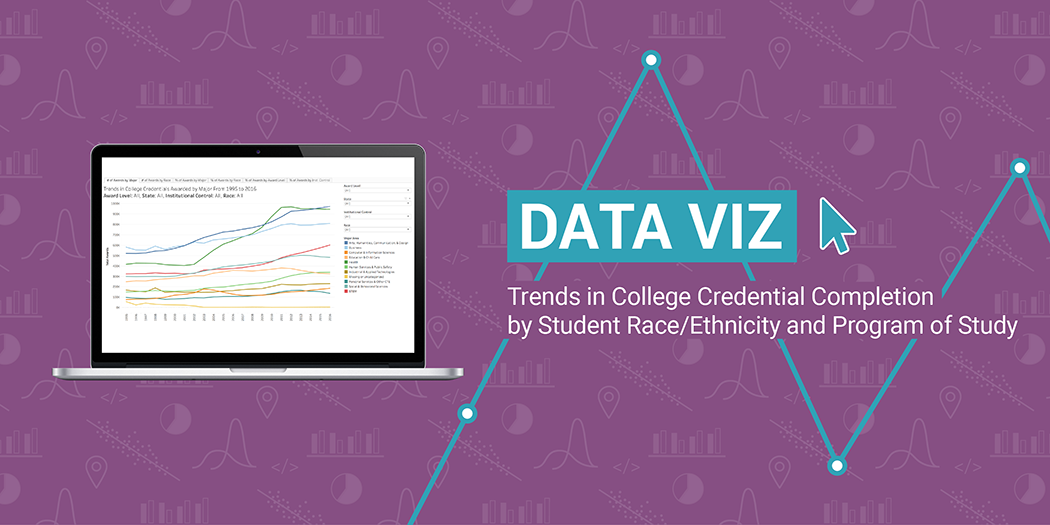How have the types of postsecondary credentials awarded—and the students to whom they were awarded—changed in the last two decades? CCRC researchers have developed a tool that can be used to visualize trends in degree and certificate completion from 1995 to 2016 by a variety of factors, including state, type of college (public or private, for-profit or nonprofit, two-year or four-year), broad major field, award level, and student race/ethnicity. The goal is to reveal previously unknown trends and patterns of degree completion by allowing the exploration of the data from as many angles as possible.
Trends Identified
Some of the trends revealed so far include the following:
The share of subbaccalaureate credentials—associate degrees and short- and long-term certificates—remained stable from 1995 to 2016 at around 40% of all postsecondary credentials awarded (including doctoral, master’s, bachelor’s, etc.). The share for Black students remained slightly but consistently higher at around 45%.
Within the community college sector, the share of short-term certificates among all postsecondary credentials awarded increased from 16.5% to 24.5%, while the share of associate degrees declined from 63.5% to 58%. The share of long-term certificates stayed roughly stable, with a slight decline from 16.7% to 15.5%.
The number of Hispanic students who earned an associate degree in a STEM-related major increased about tenfold, from 1,446 in 1995 to 15,095 in 2016. The speed of the growth greatly exceeded that for other racial/ethnic groups. The proportion of Hispanic students among STEM-related associate degree earners grew from 4.9% in 1995 to 21.7% in 2016, while the proportion of White students declined from 82% to 56%.
Within STEM-related majors, the distribution of types of credentials awarded was roughly stable from 1995 to 2016. In 2016, associate degrees and certificates accounted for 20+% of all postsecondary credentials.
Within STEM-related majors, Asian and White students generally earned bachelor’s degrees or higher, while Hispanic and Black students generally earned associate degrees or shorter term awards. This trend remained stable over time.
These trends have important implications for higher education policy and the direction of research. We hope this tool will help you find interesting results that could inform your work. We will keep updating the tool as more data become available. Any suggestions for improvement are welcome. Email us at ccrc@columbia.edu.
Data Notes
The tool uses data obtained from the Integrated Postsecondary Education Data System (IPEDS), which collects data on degree and certificate completion by six-digit Classification of Instructional Programs (CIP) code from all Title IV institutions. The tool includes all degree and certificate completion data reported to IPEDS starting in 1995, the first year that IPEDS started to collect this data at six-digit CIP code level by race/ethnicity. Institutional control is as of the reporting year to IPEDS. Community colleges that award a bachelor’s degree are considered public two-year colleges, even though IPEDS classifies some as four-year public institutions. First professional degrees, which IPEDS no longer collects data on, are included in the doctoral degree category. We derived 10 broad major categories based on six-digit CIP codes. View the details on the relationship between the CIP codes and broad major areas.





